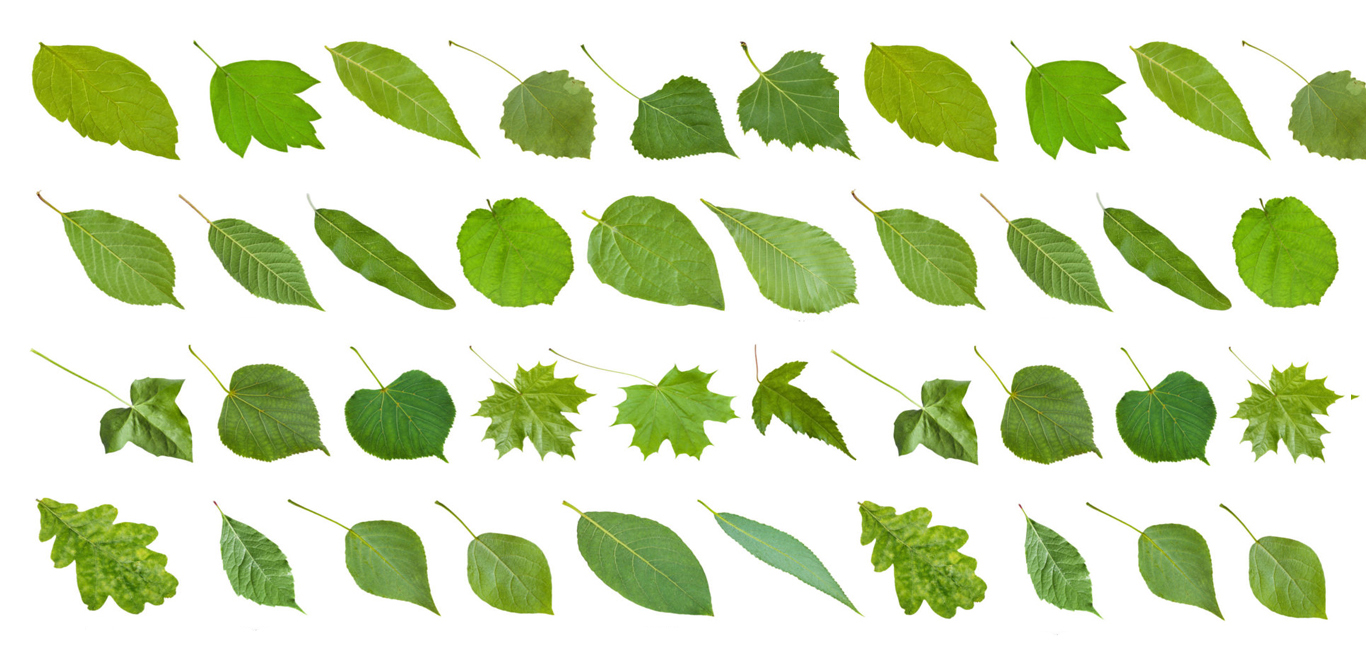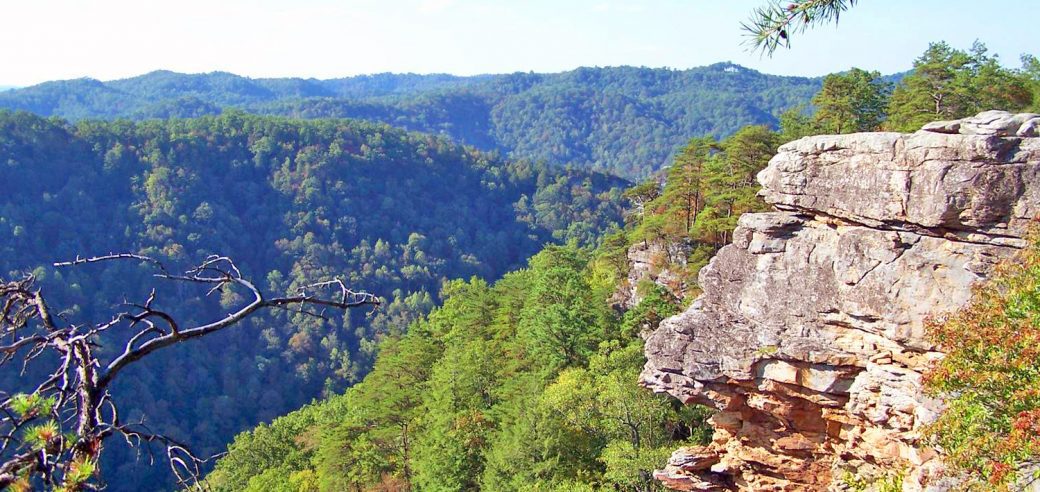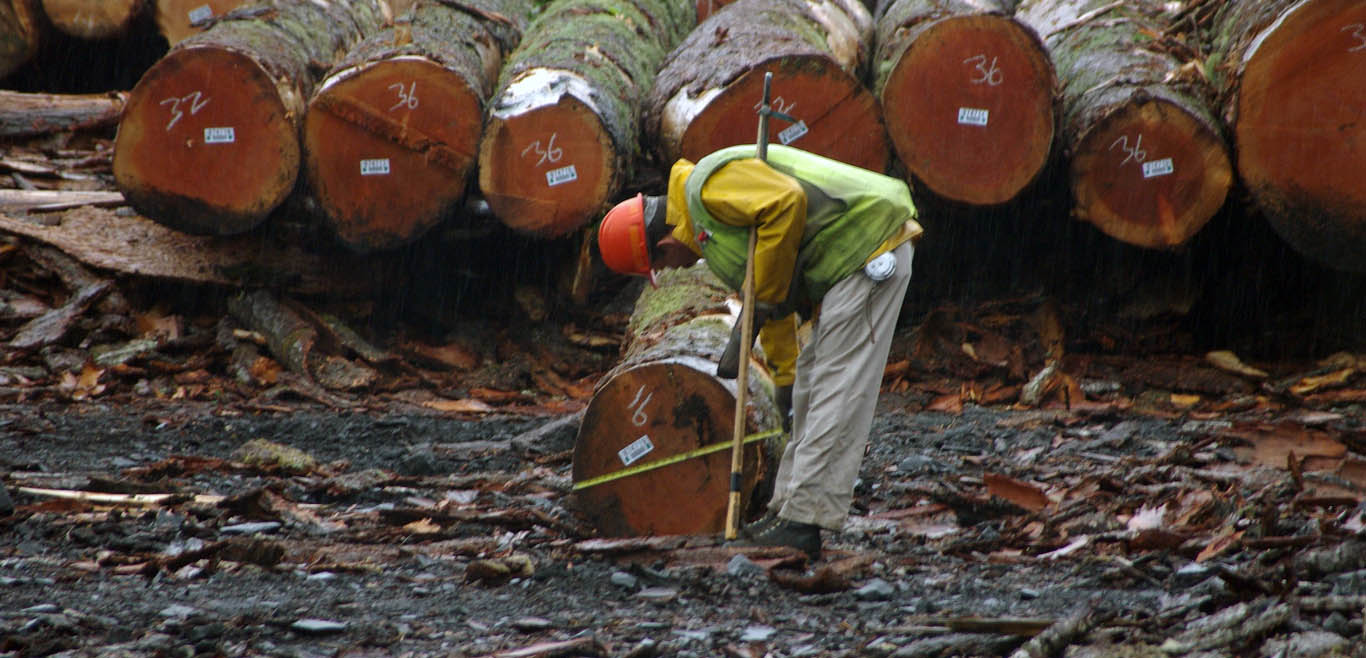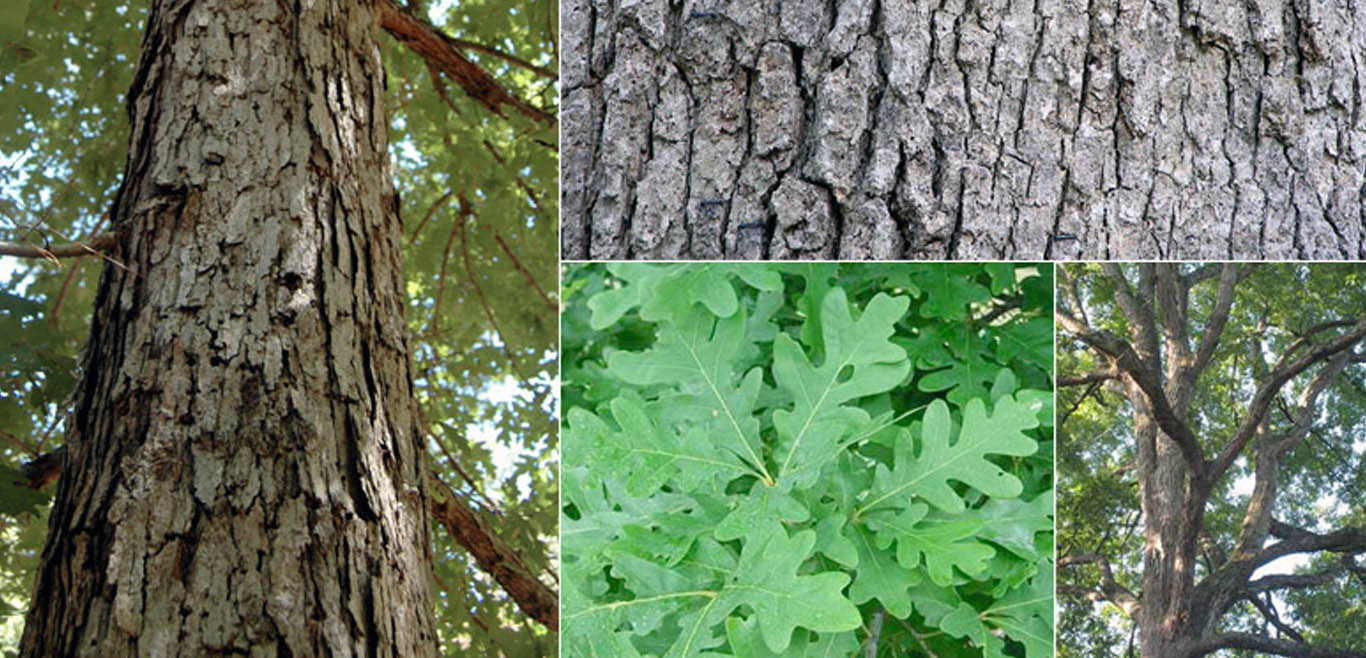Estimating Standing Timber Value 1,2,3…
Follow our three part guide to estimate the value of your standing timber. Whether you want to calculate the value of each and every tree, or just familiarize yourself with the process, these articles will give you all the tools you need to identify, estimate volume and value of your timber.

What Kind of Tree is it?
Head on over to our Industry Fact Sheet for the scoop on tree identification.Timber Value Varies Tremendously
Not every tree is equal. Some trees grow straight and limbless for long spans. Others are crooked and develop many limbs within the first 8 feet. Possible defects like hollow centers or mineral stains often can’t be detected while a tree is still standing. For this reason, within a given species, there is potentially a very wide range of values.
Measuring standing timber value
board footage you harvest is the single most important factor in estimating the value of your standing timber
The easiest step in this process—and one of the most important factors when assessing the value of a stand of timber—is estimating the volume of individual trees. Estimating tree volume is explained fully in this blog article. If you don’t feel like reading the article, here’s a quick guideline: Mature trees (20+ inches in diameter at chest height) typically contain between 250 and 500 board feet each. The exact amount depends on their height. Roughly speaking, a mature tree is big enough that you can’t—or almost can’t—wrap your arms around it. NFL wide receivers might be an exception. If your woods has a lot of these trees, it is probably ready for harvest.
Timber sells by the board foot. A board foot equals 144 cubic inches. The board footage you harvest becomes the single most important factor in estimating timber value. The more volume you have that is mature and ready for harvest, the higher the sale price will be.
The Species in Your Woods
After volume, the second most significant factor is species composition. Is that tree Black Walnut? White Oak? Red Oak? While prices change over time due to market trends, the highest value timber in the Ohio, Indiana and Northern Appalachian region is consistently Black Walnut, followed by White Oak. Other valuable species’ include Hard Maple, Hickory, Tulip Poplar, Oak species included in the white/ red families such as Black Oak and Chinkapin Oak, as well as other regional hardwoods. In general hardwoods tend to be more valuable than softwoods though this is not because they are necessarily actually more dense.
Appalachian Hardwood ID Guide
Need help identifying tree species? Check out the gallery below. Each thumbnail opens an infographic. These infographics explain the most common hardwood species found in Ohio, Indiana, and Northern Appalachia. They include details about bark, foliage, typical form, and other distinguishing characteristics.
. You may also consider investing in a paperback field guide, readily available for under $10 at your local bookstore.
Standing Timber Value Pricing
Assessing Timber Value: A Step-by-Step Guide
Now that you’ve compiled a list of trees ready to harvest and estimated board footage for each species, it’s time to get out the calculator. This is where the process gets a bit complicated. Trees of different grades command widely varying prices.
Understanding Tree Grades and Defects
Assessing the grade of a standing tree requires careful consideration. Foresters must look at both visible and invisible defects. Some trees appear beautiful while standing but are hollow inside. Others have mineral stains caused by soil composition or past livestock grazing. These issues are hard to detect while the tree stands. However, they will negatively impact timber value.
However, you can get a good idea of the range of possible values for your standing timber. For this, we turn to The Ohio State University’s Stumpage Price Report . An annual publication lists prices by region. It includes mean, median, and range for various grades of commonly sold hardwood tree species in our state. Most state university agricultural departments and regional departments of natural resources produce similar documents.
Interpreting the Stumpage Price Report
When you look at this sheet, you’ll notice grades along the left column. For each species, prices are listed for prime logs, number 1 common, number 2 common, and blocking. An average for all grades combined appears at the bottom of each section. These grades correlate with the quality of lumber that can be cut from a tree. They also determine the value of that lumber.
Prime Grade Logs
Prime grade logs produce mostly FAS lumber (the highest grade), which is ideal for furniture and cabinets. Truly exceptional logs may even become veneer.
Lower Grade Logs
By contrast, number 2 common logs end up as railroad ties and pallets. This drastic difference in potential uses explains why some logs are worth so much while others are better suited for firewood than lumber.
Final Thoughts
If you’re woods has been responsibly timbered in the past, and some time has passed since it was last harvested, you likely have a high number of harvestable timber.
The main factor assigning the different grades is the number and size lower limbs on the standing tree. In other words, the longer up the trunk a particular tree stretches without limbs or locations where limbs once anchored, the higher its grade will be. A tree without limbs for the first 16 feet will likely produce two 8 foot prime logs. Further up the tree will be number 1 and number 2 common. You see, each tree will produce several different grades of logs, the quality of which declines proportionately up the trunk toward the canopy.
If someone has responsibly timbered your woods in the past, and enough time has passed since the last harvest, you likely have a large amount of harvestable timber. Still, no timber harvest will contain only prime logs, so for estimation purposes you will likely get a more accurate estimate with average numbers verses the high end values. Using the mean figure for number 1 common logs or the low number from the prime range tells you the approximate value of your standing timber. Another strategy is simply to take the mean number for the “All Grades” entry of the table—the larger your woods the more likely this number is to be accurate. Both options will be used in examples below.
Timber Valuation: An Example
The numbers in the timber pricing report are per 1,000 board feet. For each species divide the number of board feet you’ve estimated by 1,000 and multiply this by the appropriate price from our report.
Let’s say you estimate the volume of your stand of mature White Oak to equal 10,000 board feet. In order to estimate its value, you can multiply the mean reported for no. 1 common White Oak (425 for Spring of 2012 and 482 in the Fall) by 10 (10,000 board feet divided by 1,000). As a result , your White Oak is likely worth about $4,250. Alternatively , using the second strategy mentioned above, you would multiply 10 by the “All Grades” mean value of 567, which equals $5,670. Finally , repeat this process for each species you have tallied, and you should have a ballpark estimate of what your timber is worth.
Estimating Standing Timber Value Consultations
Timber Works explains every step of both the assessment and the logging processes along the way. We make timber harvesting recommendations that consider the unique characteristics of your woods, and address the input and concerns from you, the land owner, above all others.
On the other hand , at Timber Works, we never pressure customers to sign contracts prematurely, nor do we include ambiguous language about the scope and details of a harvest in the agreements we make. Instead , Timber Works works diligently to ensure your questions and concerns are addressed fully and honestly. Consequently , you can trust that transparency and integrity are at the core of our business practices.
Call or email us today for a hassle free assessment of your standing timber! Click here for more information about logging and timber buying from the professionals at Timber Works.
Review
- Estimate the volume and individual species’ footage in your timber stand.
- If you can wrap your arms around a particular tree (excluding professional athletes) it might not be quite ready to harvest, though this depends in part on species and other conditions.
- The more mature trees you have, the more likely it is that your timber is ready for harvest.
- To estimate the value of your timber, take the volume, divided by 1,000, and multiply it by the price quoted in your states standing timber stumpage report.



